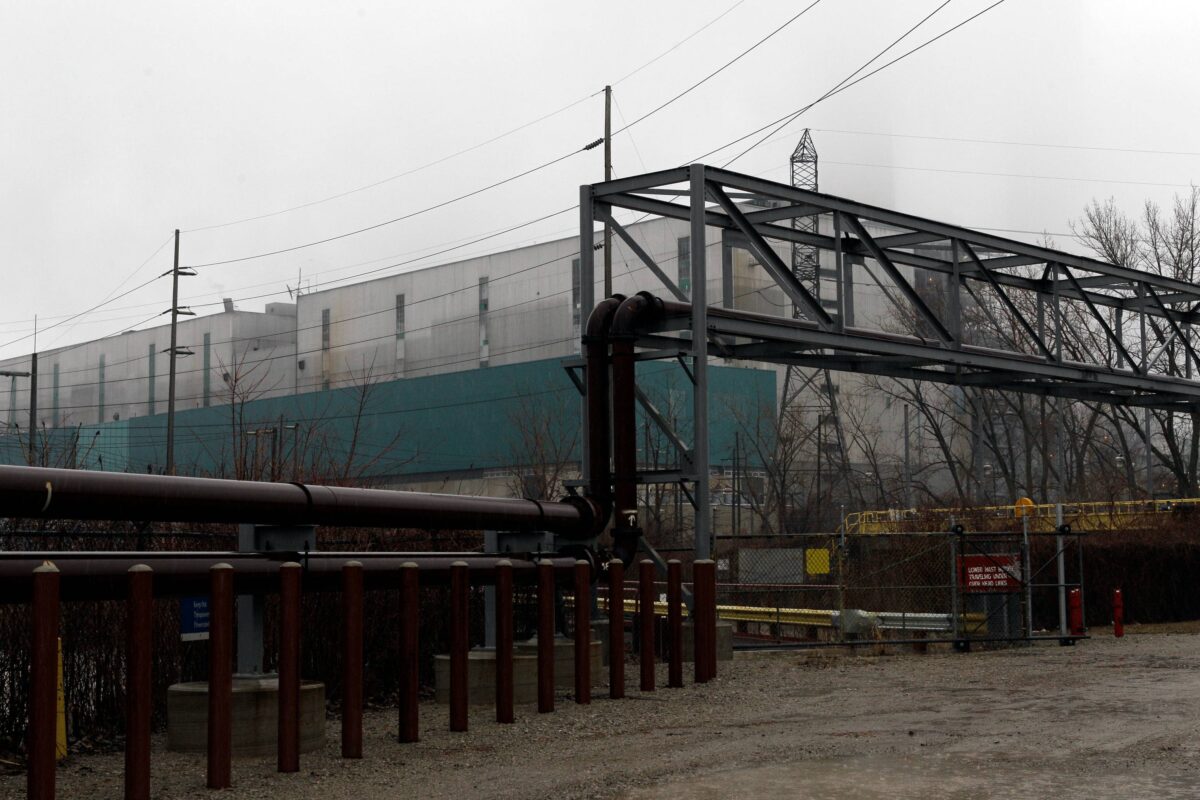Overview:
-Signed April 8, the executive orders include directives to halt the enforcement of state climate laws, cast doubt on climate change.
-DTE's Monroe coal plant slated for closure by 2032, while Consumers Energy's J.H. Campbell Generating Complex is scheduled to close this year.
-“If coal were so clean, why are they saying they have to eliminate basically all of these regulatory protections in order to try to keep it alive?” environmental advocate says.
The Trump administration is targeting state climate laws and looking to reinvigorate the U.S. coal industry in executive orders that could jeopardize Michigan’s transition away from fossil fuels.
The executive orders signed by Trump April 8 include a directive to “stop the enforcement” of state climate laws, referring to climate change in quotes, implying skepticism about an established scientific fact.
Other directives look to repeal regulations that “discriminate” against coal production, waive pollution restrictions for coal plants, and develop a process for using emergency powers to prevent coal plant retirements.
Legal experts question the constitutionality of potential legal action against state climate laws. One such law includes Michigan’s target of achieving 100% renewable energy by 2040. President Donald Trump’s pledge to bring back “beautiful clean coal” may also prove impracticable because coal has failed to compete economically with natural gas generation.
Nevertheless, some environmental advocates fear the orders could discourage new climate laws, renewable energy investments, and research.
Orders may create chilling effect for climate action
It’s unclear whether last week’s executive orders were the beginning of a concerted legal attack on climate laws or effectively a press release, said Shannon Fisk, director of state electric sector advocacy for the environmental legal group Earthjustice. Fisk said any litigation against state climate laws would infringe on the Constitution.
“It is well established that states are free to establish their own climate goals and policies to promote a clean energy transition,” he said.
While the federal government’s primary power is litigation, the Trump administration could also threaten to withhold funding for education or infrastructure for states with climate laws, Fisk said. He added that such a withholding of funds would be “blatantly illegal.”
Maine is facing this kind of threat after refusing to comply with Trump’s executive order looking to bar trans students from girls’ and women’s sports. The Education Department initiated a process to withdraw federal K-12 funding from the state last week. The U.S. Department of Agriculture froze funding for Maine universities in early April, only to have a federal judge order the funding be restored.
The broader goal of Trump’s executive orders may be to create a chilling effect for nonprofits, universities, and others looking to advance the transition to renewable energy, according to Bentley Johnson, federal government affairs director for the Michigan League of Conservation Voters.
Johnson said he doubts the administration’s messaging will do much to sway the public, which largely supports renewable energy, although it could play well with the president’s core supporters.
“An executive order … doesn’t change the law in Michigan. It doesn’t change the global trends toward clean energy and toward climate action,” he said. “It’s more messaging and symbols for their base.”
MORE FROM PLANET DETROIT
Michigan poised to join states requiring 100 percent clean electricity
A suite of bills headed to the governor’s desk will also give the state, instead of local governments, the authority to approve industrial-scale renewable energy projects.
DTE spending casts shadow over Democrats’ clean energy legislation
Advocates are concerned about the bills’ future.
DTE agrees to shut down coal-fired Monroe plant in 2032, three years ahead of schedule
The agreement includes investment in renewable energy and storage, energy efficiency, bill assistance and energy equity. It also gives favorable treatment to DTE shareholders, advocates say.
Can coal make a comeback?
It’s unclear whether Trump’s executive orders to revive the coal industry can succeed after years of failing to compete with natural gas and renewables.
The executive orders will not delay the retirement of remaining DTE Energy and Consumers Energy coal plants, according to the utilities.
DTE’s Monroe coal plant is “quickly approaching the end of its lifecycle” and will be fully shut down by 2032, spokesperson Jill Wilmot told Planet Detroit. The company said it still plans to retire coal generation at its Belle River power plant in St. Clair County by 2026, converting it into a natural gas peaker plant during periods of high energy demand.
Consumers Energy spokesperson Katie Carey said the company is moving forward with its closure of the J.H. Campbell Generating Complex this year, the utility’s last remaining coal power plant.
Coal plant retirements between 2005 and 2015 were largely the result of energy markets and low natural gas prices, not environmental regulations, according to a 2019 Rand Journal of Economics study. According to research released in 2023, wind and solar generation were also more cost-effective than 99% of coal plants.
Trump’s directive to the Secretary of Energy to develop “uniform methodology for analyzing current and anticipated reserve margins” for power generation could be used to make a case for keeping coal plants online. Regional transmission organizations calculate these reserve margins to ensure a region has enough energy generation if there is a spike in demand.
Fisk said that by switching oversight of this process to the Department of Energy, the Trump administration may be trying to “fabricate an energy emergency towards the goal of propping up an aging coal fleet.”
Such a policy would mean increasing residents’ electricity bills to keep decades-old coal plants running while adding to regional air pollution, Fisk said.
Coal-fired power plants emit a slew of harmful pollutants, including particulate matter, sulfur dioxide, nitrogen oxides, and heavy metals like mercury. These plants caused 460,000 deaths between 1999 and 2020, according to a 2023 study in the journal Science.
The Trump administration isn’t just aiming to protect coal generation; it also looks to enable coal plants to comply with a weaker version of the Environmental Protection Agency’s Mercury and Air Toxic Standards for two years and dial back Biden-era emission controls, according to the executive order.
Fisk called this a dangerous, deregulatory effort that compounds the harm for people living near coal plants who have dealt with poor air for decades.
“It runs directly counter to this claim that somehow there’s this thing called ‘beautiful clean coal,’” he said. “If coal were so clean, why are they saying they have to eliminate basically all of these regulatory protections in order to try to keep it alive?”





